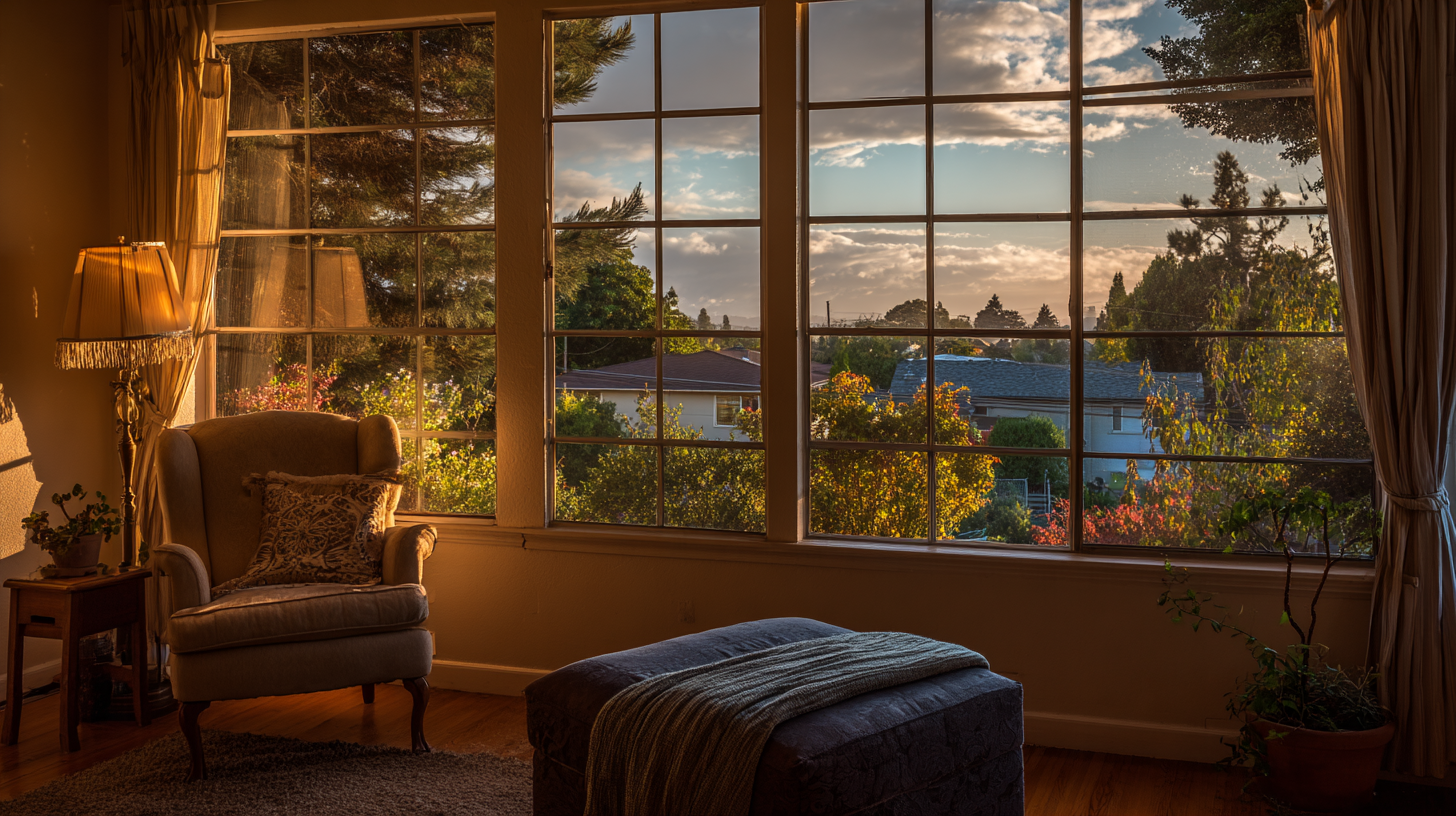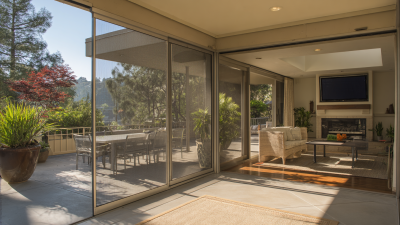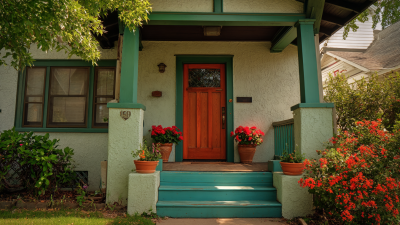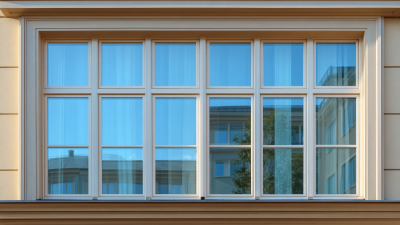Exploring the Efficiency of Value Windows: How Energy Savings Can Reduce Your Bills by Up to 30%
In today's world, where energy efficiency is paramount, optimizing energy consumption not only leads to a greener planet but can also significantly reduce household expenses. One of the most effective methods to achieve this is through the strategic use of value windows. These innovative window solutions are designed to enhance thermal performance, reduce energy loss, and ultimately lower heating and cooling costs. By understanding how value windows function and exploring their benefits, homeowners can unlock potential savings of up to 30% on their energy bills. This guide will delve into the mechanisms behind value windows, provide practical tips on installation and maintenance, and highlight the long-term advantages of investing in energy-efficient window technology. Whether you are building a new home or renovating an existing space, embracing value windows can lead to substantial financial and environmental benefits.

Evaluating the Concept of Value Windows in Energy Efficiency
Value windows are an innovative concept in the realm of energy efficiency, primarily focusing on the strategic integration of windows that optimize energy performance. By assessing how the orientation, glazing, and frame materials of windows affect thermal insulation and natural light, homeowners can significantly enhance their energy savings. Research shows that properly designed value windows can lower heating and cooling costs by regulating indoor temperatures more effectively, leading to potential savings of up to 30% on energy bills.
In evaluating value windows, it becomes apparent that their design is not merely aesthetic but functional. High-performance glazing options, coupled with energy-efficient frames, create a barrier that minimizes thermal transfer. This feature allows homes to maintain comfortable living conditions while reducing reliance on artificial heating and cooling systems. The implementation of value windows is a pivotal step in promoting sustainable energy practices, as they contribute to reducing a household's overall carbon footprint while providing economic benefits through decreased utility expenses.
Understanding How Value Windows Enhance Energy Conservation
Value windows represent a significant advancement in energy conservation technology, designed to optimize thermal insulation and minimize energy loss. By utilizing double or triple glazing and incorporating low-emissivity coatings, these windows create a barrier against outside temperatures, effectively regulating indoor climate. This reduction in heat transfer means that less energy is required for heating in winter and cooling in summer, resulting in substantial energy savings.
Moreover, the design of value windows not only contributes to lower energy bills but also enhances overall comfort within the home. Homeowners can experience a more consistent temperature throughout their living spaces, reducing the reliance on HVAC systems. As these systems account for a large percentage of household energy use, improving energy efficiency through value windows not only benefits the environment but also leads to considerable savings financially over time.
The long-term advantages of investing in value windows extend beyond immediate cost reductions—they promote a sustainable lifestyle and reduce the carbon footprint of households.
Quantifying Energy Savings: Industry Data on Cost Reductions
The concept of value windows has emerged as a crucial factor in enhancing energy efficiency within residential and commercial buildings. According to industry data, the implementation of energy-efficient windows can lead to significant cost reductions, with estimates suggesting savings of up to 30% on energy bills. These savings arise from improved insulation and reduced reliance on heating and cooling systems, ultimately translating to lower utility costs for consumers.
When quantifying these energy savings, studies have revealed that homes fitted with high-performance windows experience a marked decrease in energy consumption. For instance, data indicates that buildings with triple-pane glass can achieve a reduction in heating costs by nearly 25%. Furthermore, the long-term financial benefits extend beyond immediate savings, as modern windows often qualify for local and federal incentives, enhancing their overall value. As more homeowners and businesses turn to energy-efficient solutions, the metrics on cost reductions continue to highlight the financial viability and ecological benefits of investing in quality value windows.

Case Studies: Successful Implementation of Value Windows in Residential Settings
The implementation of value windows in residential settings has yielded significant energy savings, demonstrating a tangible impact on household bills. Case studies from various regions highlight that homeowners utilizing these innovative window technologies can reduce their energy costs by up to 30%. For instance, in one case study, a suburban home retrofitted with energy-efficient windows reported a notable decrease in heating expenses during colder months, showcasing the immediate financial benefits for residents.
Moreover, these value windows not only contribute to cost savings but also promote sustainability within communities. By enhancing insulation and reducing energy consumption, they lessen the reliance on non-renewable energy sources. As more homeowners and developers recognize these advantages, the trend towards energy-efficient housing is gaining momentum, further driving innovation in the residential market. Ultimately, the successful implementation of value windows serves as a blueprint for future projects, emphasizing the importance of integrating technology with environmental consciousness.
Energy Savings from Value Windows Installation
This chart illustrates the percentage of energy savings achieved by installing value windows in various residential settings. The data showcases a range of different homes that have successfully implemented these upgrades, demonstrating significant cost reductions on energy bills.
Long-Term Financial Benefits of Value Windows on Utility Expenses
Value windows not only enhance the aesthetic appeal of homes but also offer significant long-term financial benefits by drastically reducing utility expenses. According to the U.S. Department of Energy, energy-efficient windows can reduce heating and cooling costs by approximately 25-30%, making them a smart investment for homeowners seeking to lower their monthly bills. In an era where energy prices are on the rise, the impact of these savings can be substantial over the lifespan of the windows, often exceeding $10,000 in total savings.
Moreover, studies from the National Fenestration Rating Council (NFRC) advocate the advantages of investing in value windows. Their research indicates that homes equipped with energy-efficient windows not only maintain a more stable indoor temperature but also enjoy a reduction in carbon footprint, aligning with eco-conscious living principles. Most notably, the efficient insulation properties of these windows can significantly decrease the demand on HVAC systems, further translating into reduced maintenance costs and extended appliance lifespans. These compelling statistics underline the financial prudence of choosing value windows for both immediate and long-term economic relief.

Related Posts
-

Why Choosing Aluminum Screen Doors Can Enhance Your Home's Comfort and Style
-

How Storm Doors Can Enhance Your Home's Energy Efficiency and Security
-

Transform Your Home's Comfort: The Benefits of Installing Aluminum Screen Doors
-

The Ultimate Guide to Choosing the Best Exterior Storm Windows for Your Home
-

Exploring the Impact of Window Places on Indoor Air Quality: A Comprehensive Review
Our Location
476 Main Street - Route 28
Dennisport, MA 02639
Business Hours -
- Mon - Fri
- -
- Saturday
- -
- Sunday
- Closed

Share On: